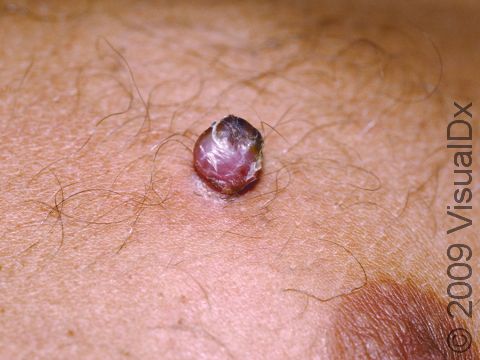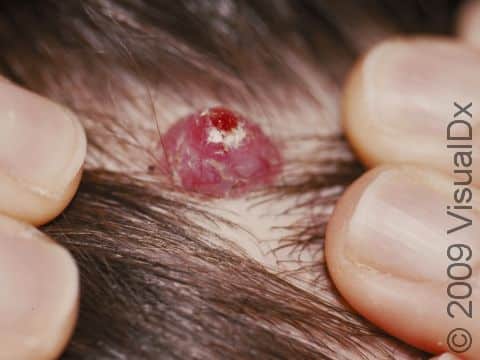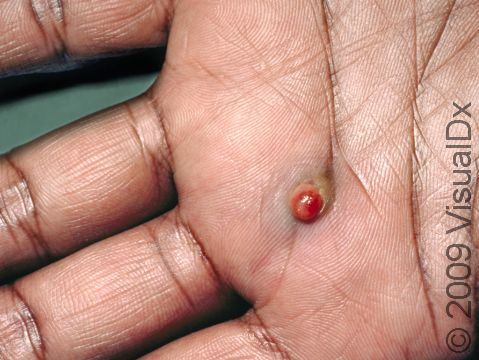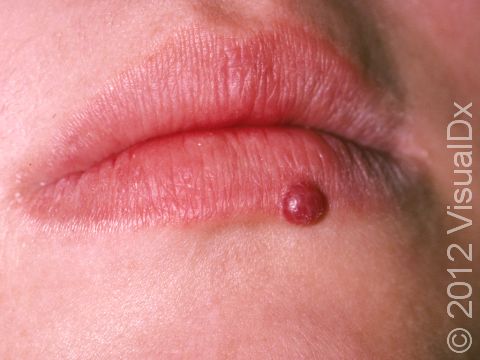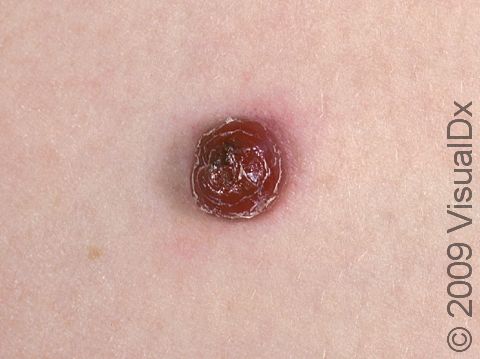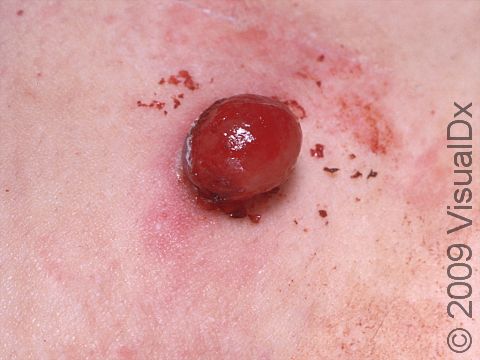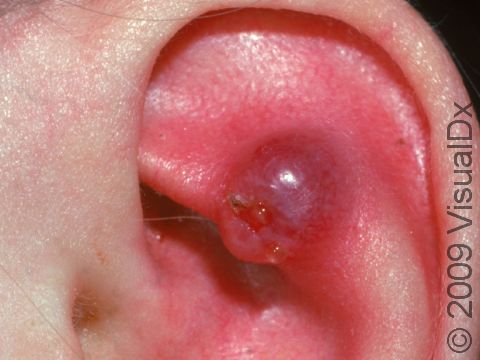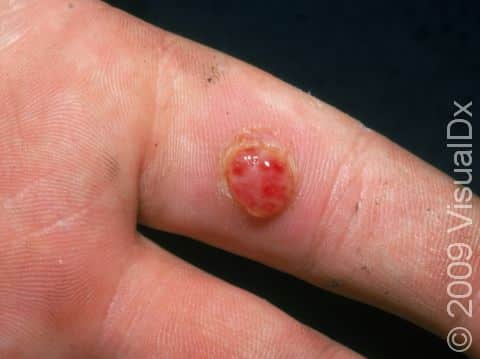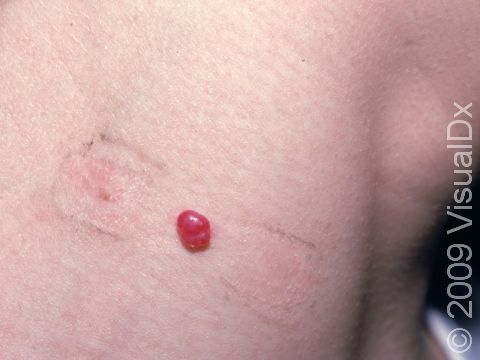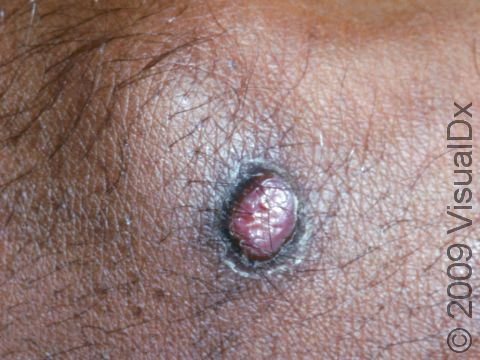Pyogenic Granuloma
A pyogenic granuloma is a common skin growth made of up of tiny blood vessels that looks like a red, sometimes raw, bump. It grows quickly but does not usually get bigger than one centimeter. As it grows, it can look like it is oozing or bleeding. The granuloma often occurs in the mouth or on the hands or feet, and it may occur on the upper back or neck. Pyogenic granuloma is especially common in pregnant women (then called a granuloma gravidarum) and will often grow during the pregnancy and shrink after the baby is born. If a pyogenic granuloma does not shrink on its own, there are a few ways that a doctor can take care of the growth.
Who's At Risk?
Pyogenic granulomas occur in children and adults and men and women, though pregnant women are more commonly affected than others. Additionally, people more likely to be affected are those taking the oral acne medications isotretinoin or acitretin (Soriatane®), women taking birth control pills, and those taking indinavir (Crixivan®).
Signs & Symptoms
The most common locations for pyogenic granuloma include:
- Lips, gums, and inner mouth (particularly in pregnant women)
- Hands and fingers
- Head and neck
- Feet and toes
- Upper trunk
Typically, a pyogenic granuloma appears as a beefy, red bump that enlarges rapidly over a few weeks. On average, a pyogenic granuloma is about 5–10 mm in diameter. It may bleed easily and, in some cases, can be tender. Very rarely, more than one pyogenic granuloma may develop at the same time.
Self-Care Guidelines
See your doctor if you notice any rapidly growing skin growth in order to establish a correct diagnosis. Because pyogenic granulomas are prone to easy bleeding, they should be covered with a bandage until you see the doctor.
Treatments
If the diagnosis of pyogenic granuloma is suspected, your doctor will probably want to perform a skin biopsy. The procedure involves:
- Numbing the skin with an injectable anesthetic.
- Sampling a small piece of skin by using a flexible razor blade, a scalpel, or a tiny cookie cutter (called a “punch biopsy”). If a punch biopsy is taken, a stitch (suture) or two may be placed and will need to be removed 6–14 days later.
- Having the skin sample examined under the microscope by a specially trained physician (dermatopathologist).
Pyogenic granulomas that develop in pregnant women often resolve after delivery. Similarly, pyogenic granulomas associated with medications usually improve when the medicine is discontinued or the dosage is lowered. Depending on the size, location, and symptoms of the pyogenic granuloma, the doctor may decide that no treatment is necessary for pregnant women or for people who can safely stop or lower the dose of the medication that caused the lesion.
Although pyogenic granuloma is a benign condition, it is frequently removed due to its tendency to bleed, its tenderness, and its distressing appearance. However, untreated pyogenic granulomas may go away on their own.
In obvious cases of pyogenic granuloma, your physician may choose to treat it immediately after obtaining the biopsy. Such treatments include:
- Scraping and burning (curettage and cauterization). After numbing with local anesthetic, the area is scraped with a sharp instrument (a curette) and burned with an electric needle (cautery).
- Application of silver nitrate solution
- Topical imiquimod cream (Aldara®)
- Laser treatment
- Freezing with liquid nitrogen (cryosurgery)
- Surgical removal (excision)
Approximately 40% of pyogenic granulomas come back (recur) after treatment, especially those lesions located on the trunks of teenagers and young adults. A recurrent pyogenic granuloma is best treated by surgical excision.
Visit Urgency
Make an appointment with a dermatologist or another physician if any rapidly growing or bleeding growth develops on your skin or in the areas lining your nose or mouth (mucous membranes).
References
Bolognia, Jean L., ed. Dermatology, pp.1823-1824. New York: Mosby, 2003.
Freedberg, Irwin M., ed. Fitzpatrick’s Dermatology in General Medicine. 6th ed, pp.1003, 1009. New York: McGraw-Hill, 2003.
Last modified on August 16th, 2022 at 2:44 pm

Not sure what to look for?
Try our new Rash and Skin Condition Finder
